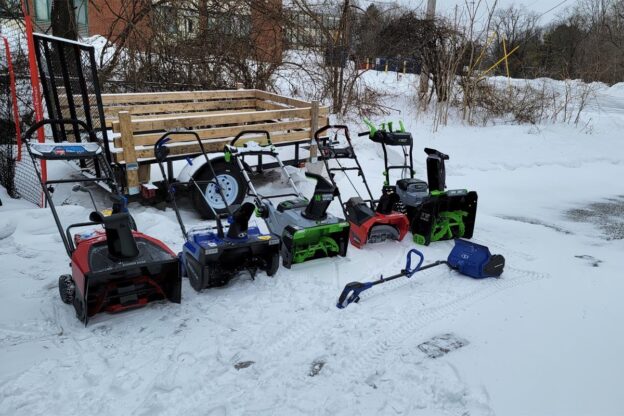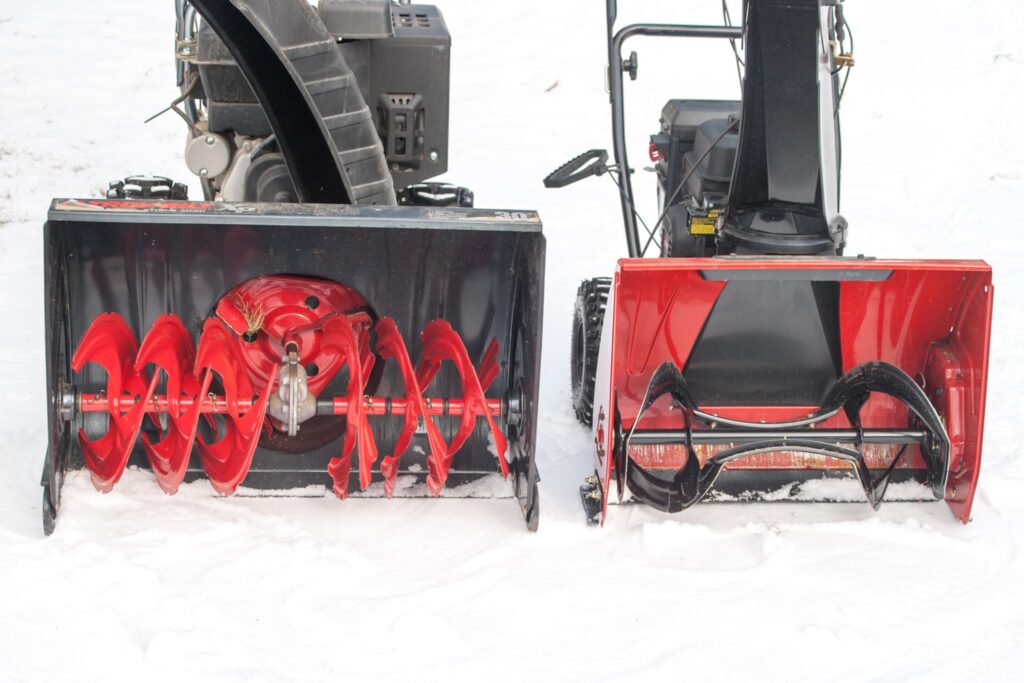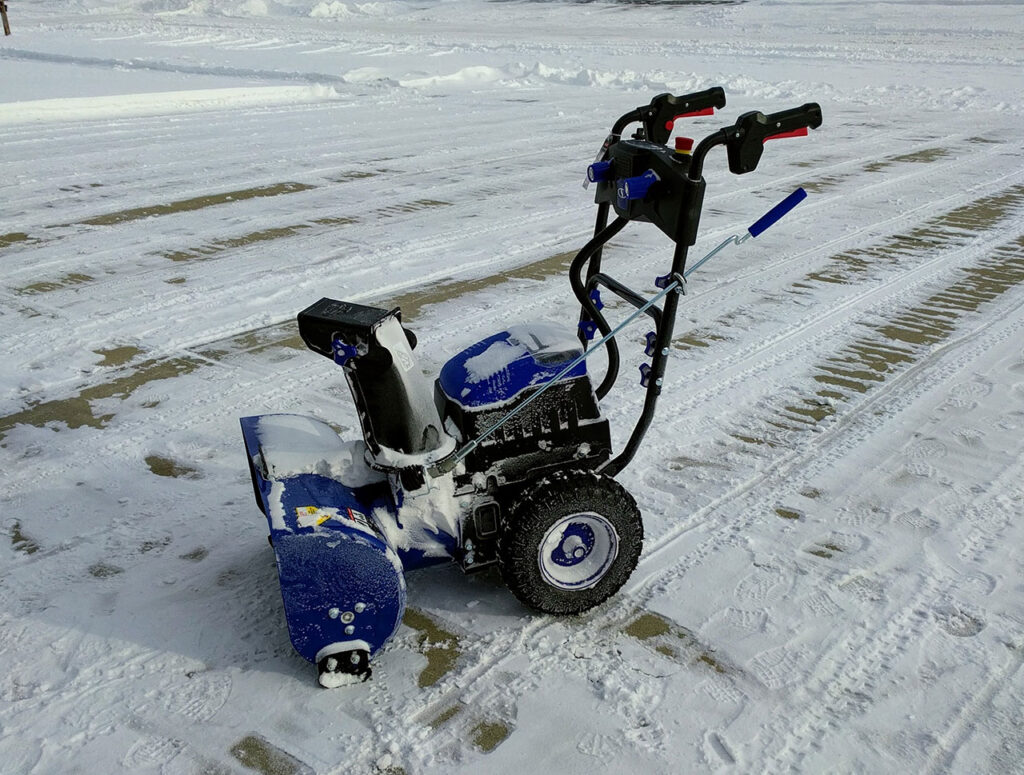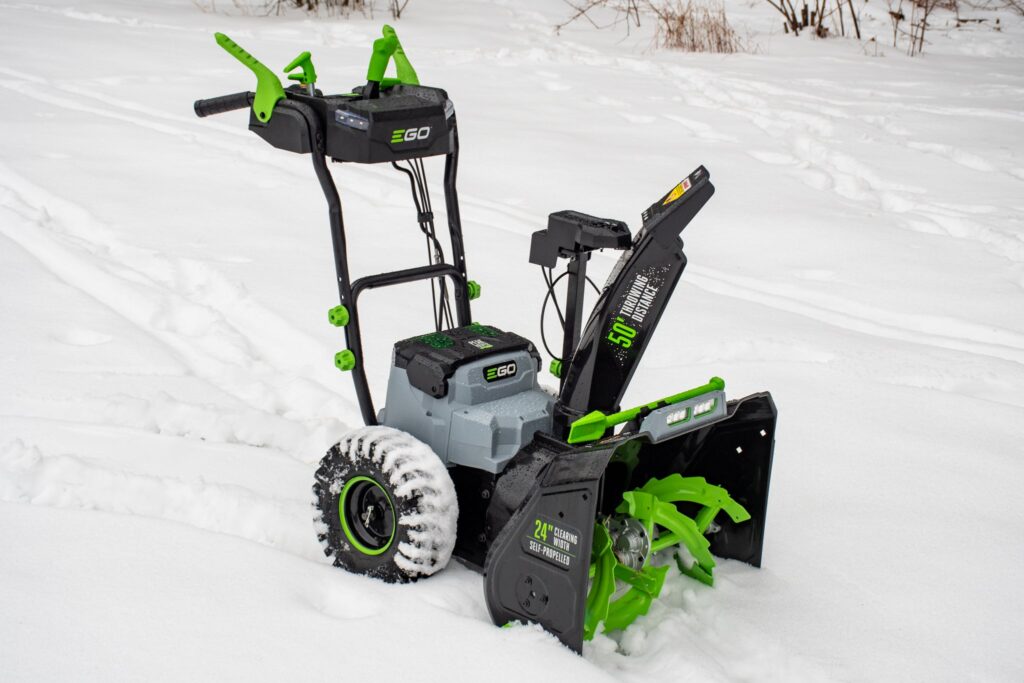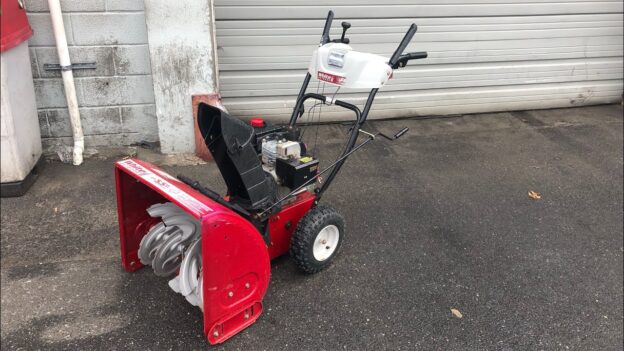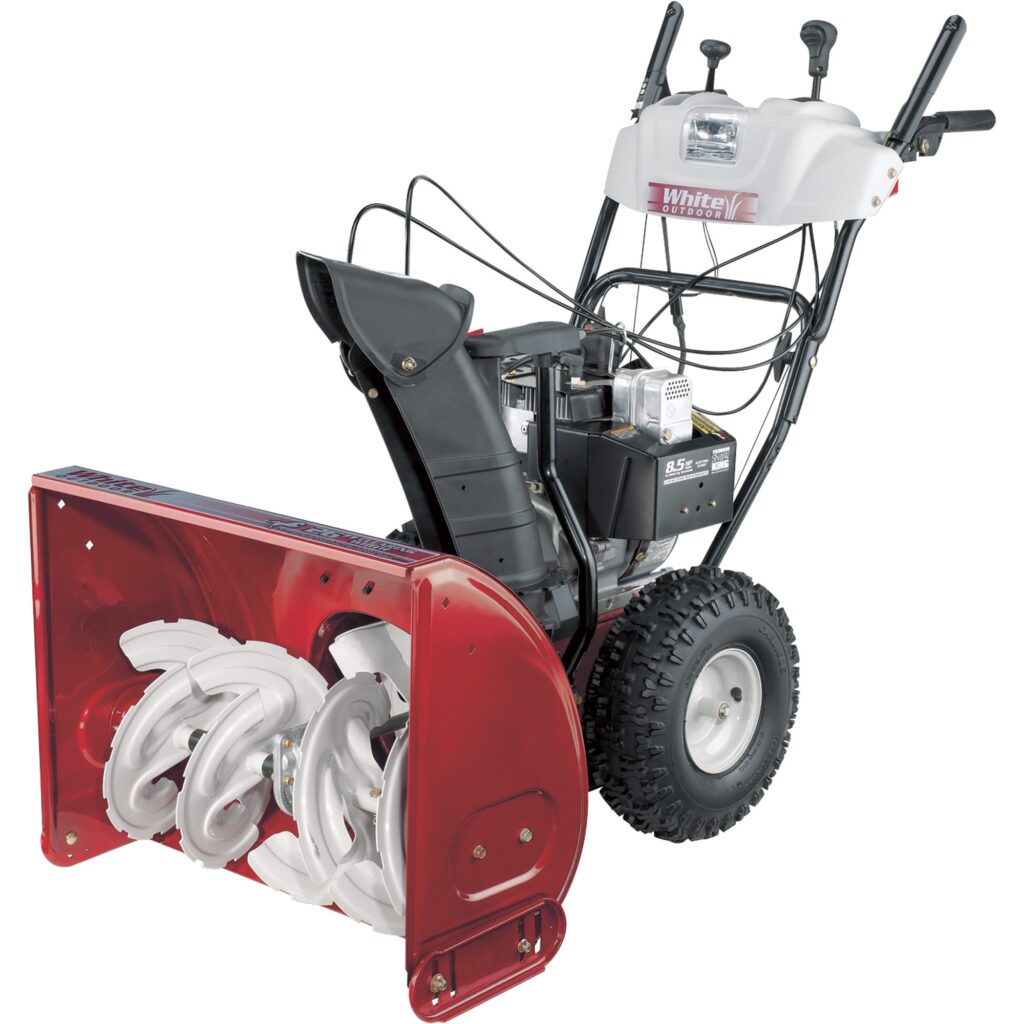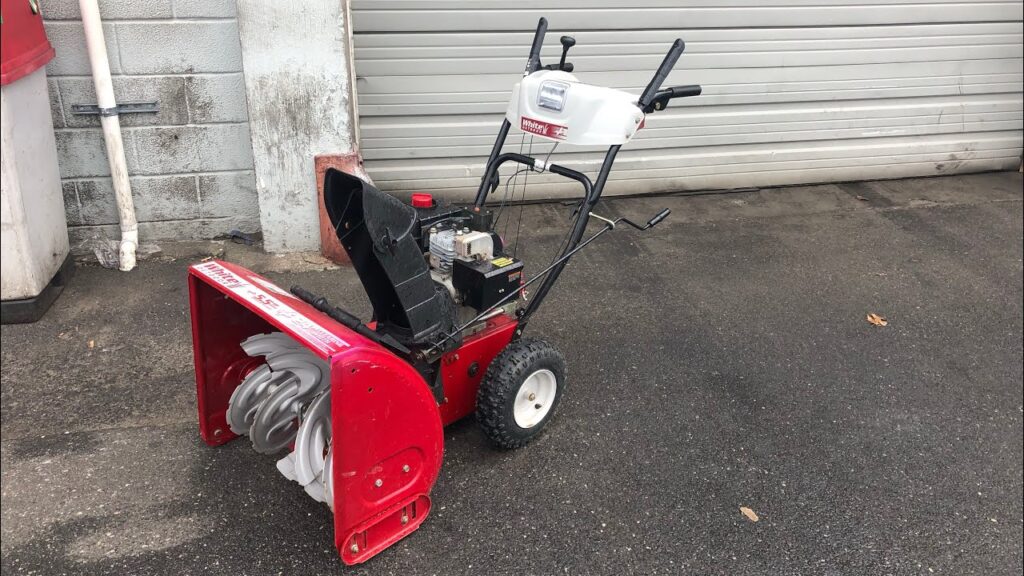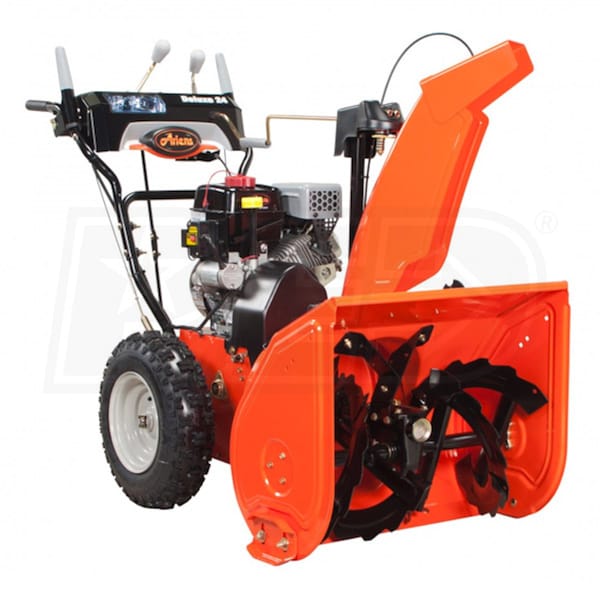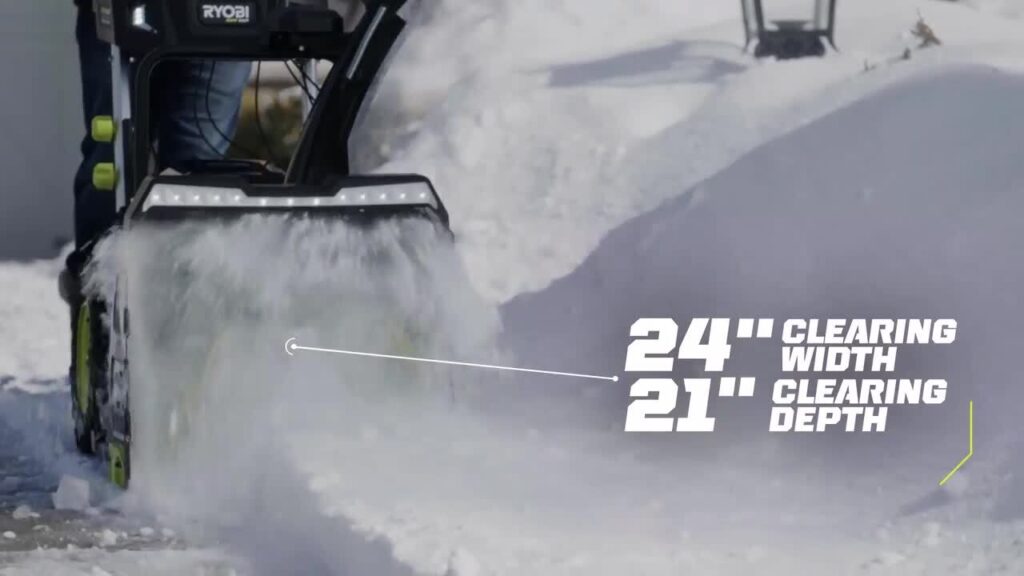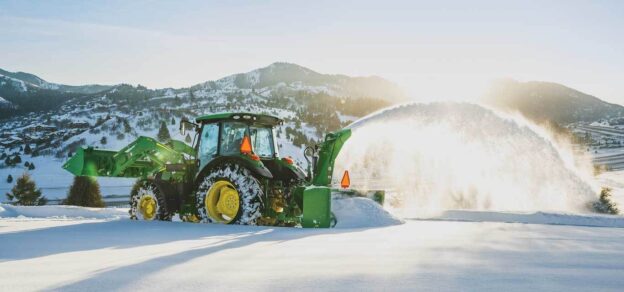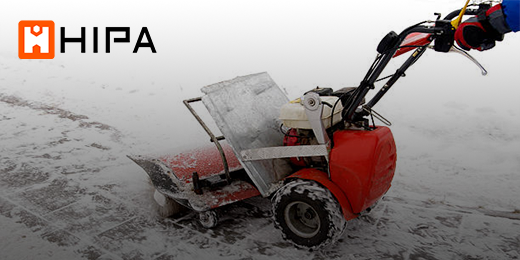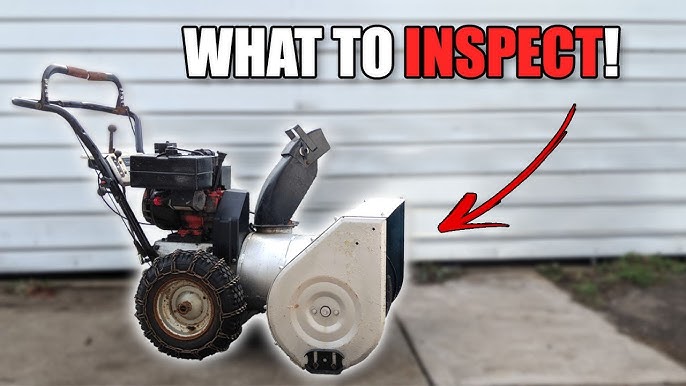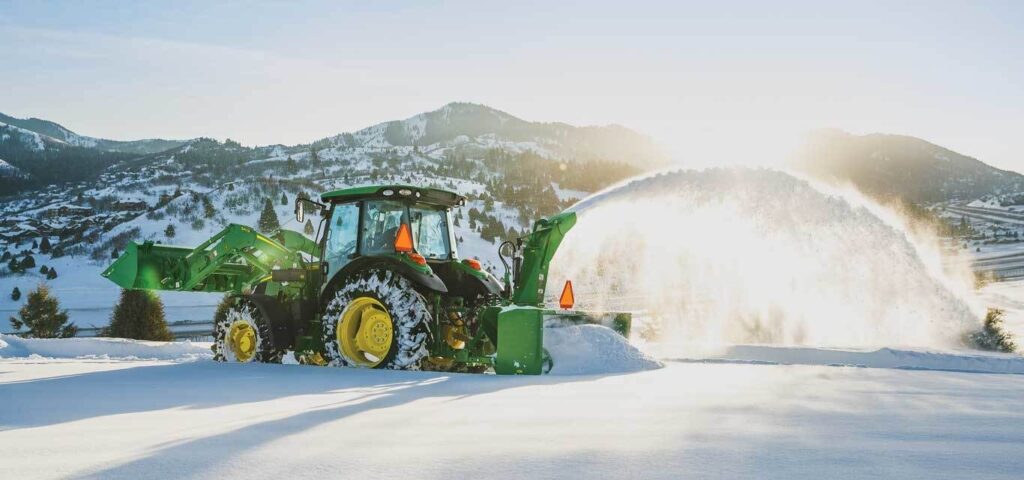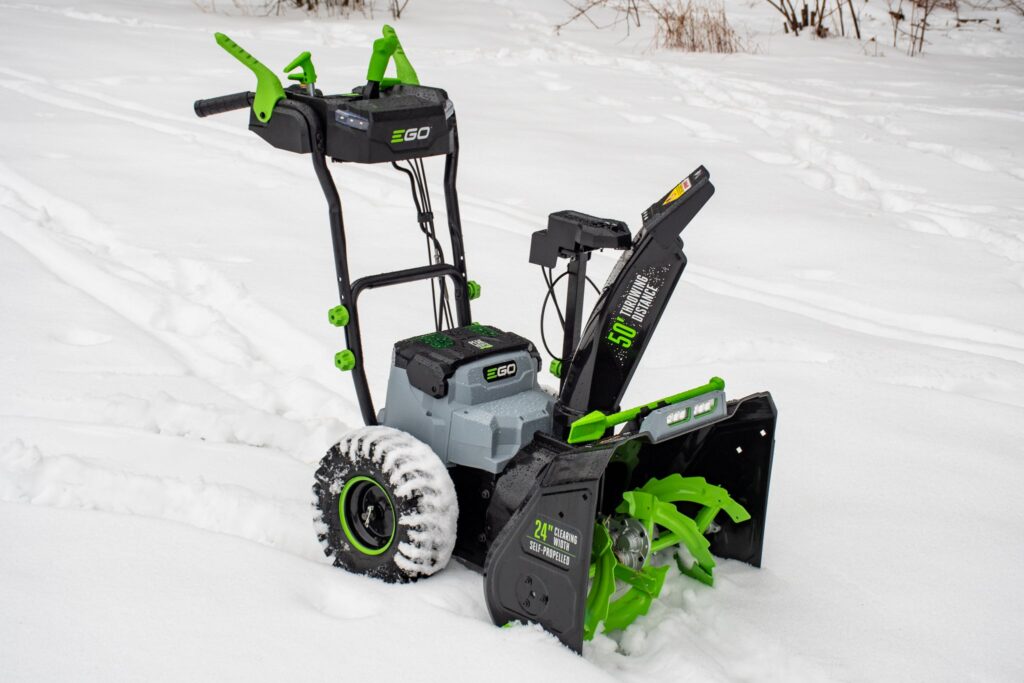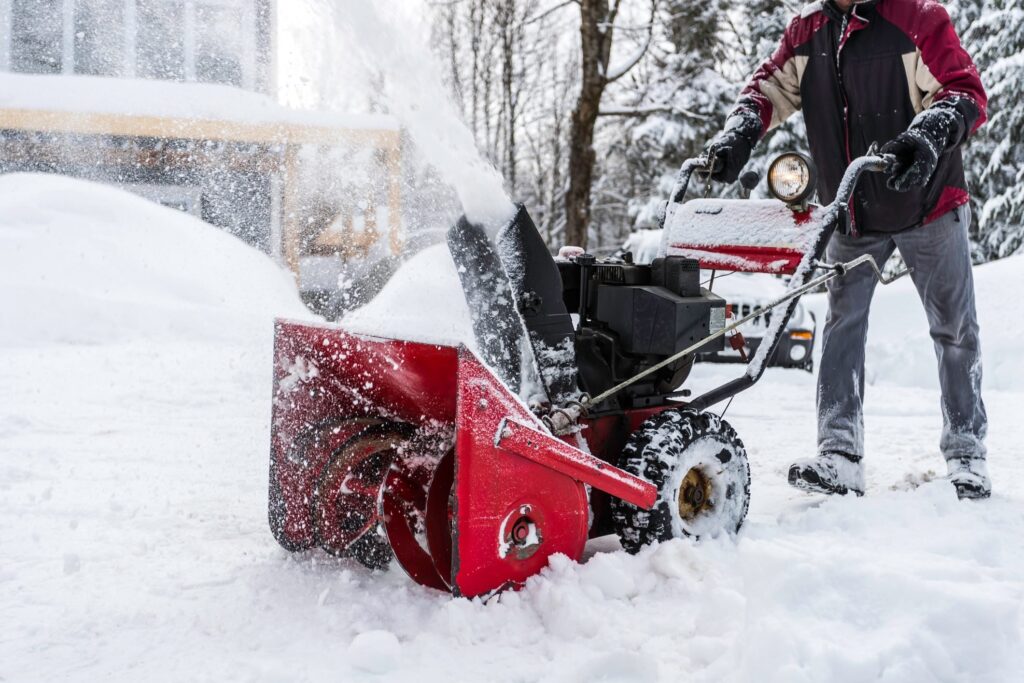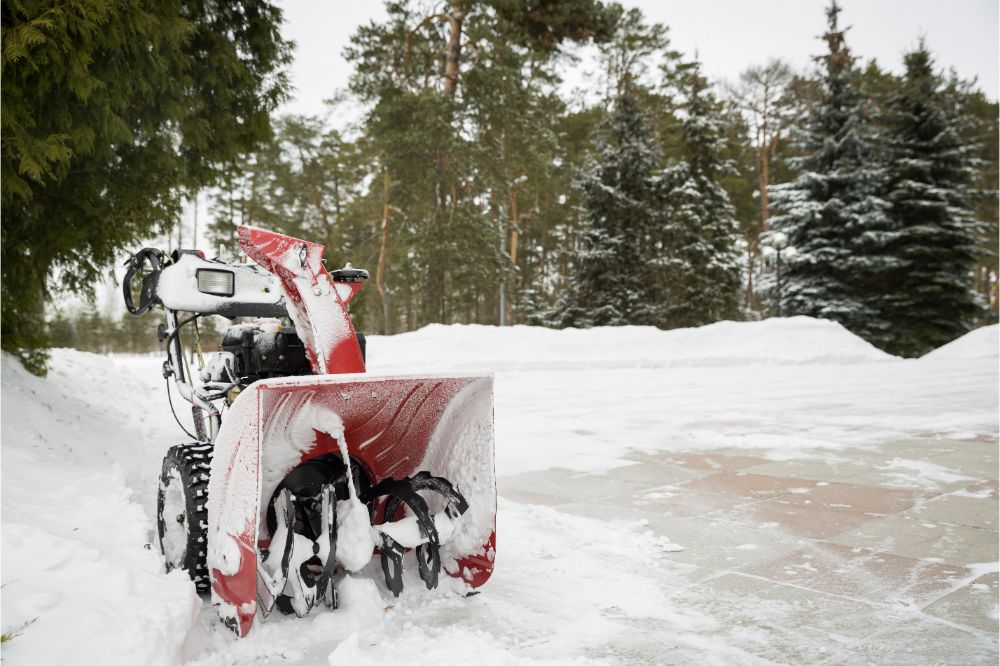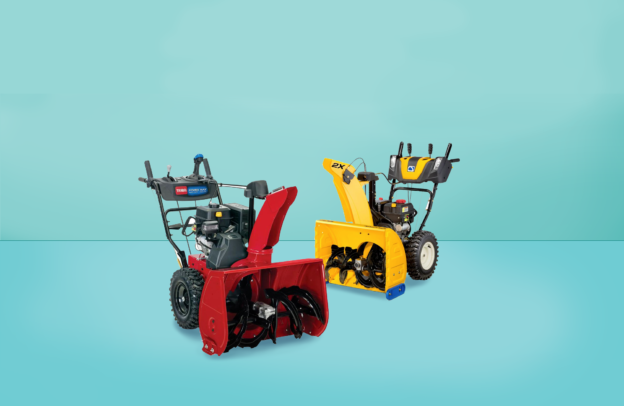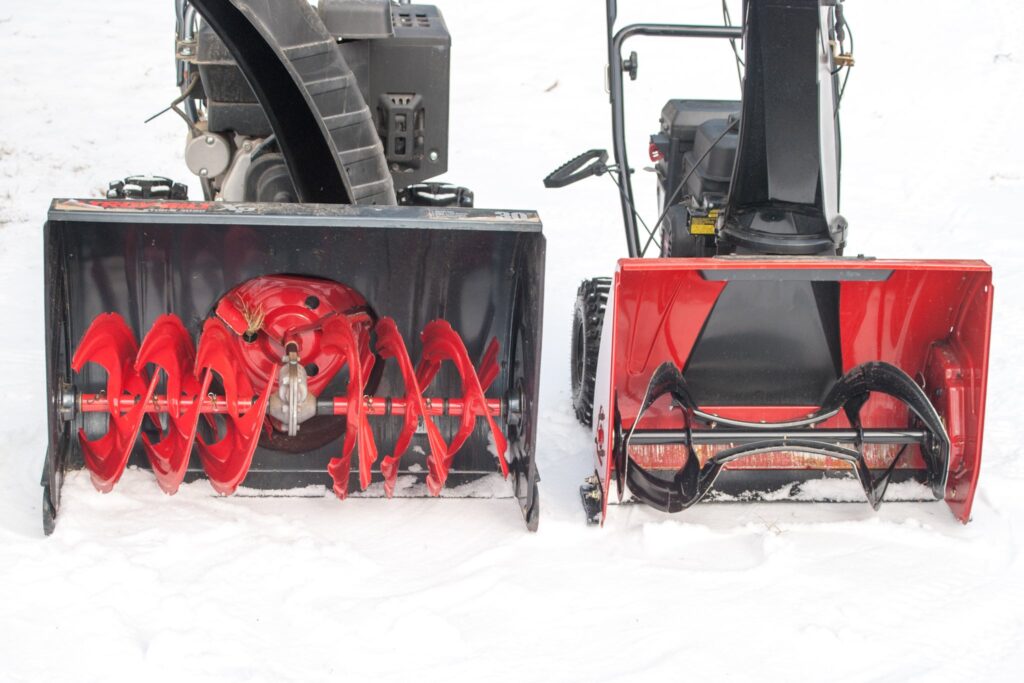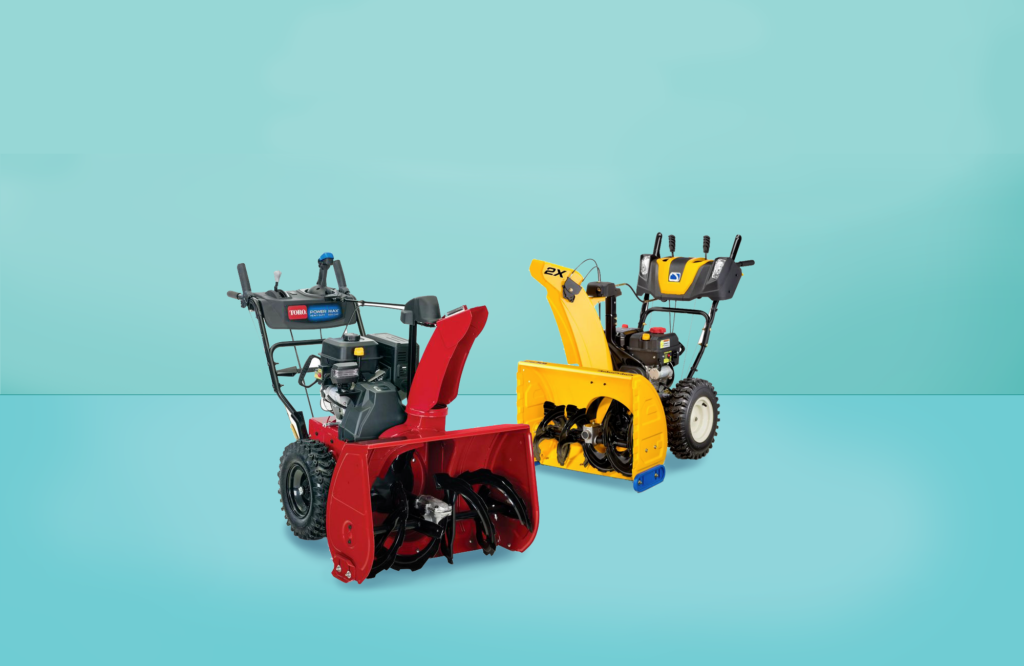If you’ve ever found yourself dreading the upcoming winter season, constantly reminding yourself of the inevitable task of shoveling snow, then you’re not alone. But what if there was another, more convenient option? Enter battery powered snow blowers, an innovative solution that promises to make your winter blues a thing of the past. But are these machines a viable alternative to their gas-powered counterparts? In this article, we’ll explore the efficiency, performance, and overall practicality of battery powered snow blowers, helping you decide if it’s time to walk away from the shovel and embrace this new technology.
Benefits of Battery Powered Snow Blowers
Lower Noise Pollution
One of the major advantages of using a battery powered snow blower is the reduced noise pollution compared to gasoline-powered models. battery powered snow blowers operate quietly, making them ideal for urban areas or neighborhoods with noise restrictions. With these snow blowers, you can clear your driveway or walkway without disturbing the peace or waking up your neighbors early in the morning.
Eco-friendly Operation
Battery powered snow blowers are environmentally friendly since they produce zero emissions during operation. Unlike gas-powered models, which release harmful pollutants into the air, battery powered snow blowers are clean and do not contribute to air pollution or greenhouse gas emissions. Choosing a battery powered snow blower helps to reduce carbon footprint and support a healthier environment for everyone.
Ease of Use
Another benefit of battery powered snow blowers is their ease of use. These snow blowers are typically lightweight and compact, making them easy to maneuver and navigate around your property. They often come with intuitive controls and ergonomic designs, allowing you to operate them with minimal effort. Battery powered snow blowers eliminate the hassle and strain typically associated with shoveling or using heavy gas-powered equipment.
Low Maintenance
battery powered snow blowers require less maintenance compared to their gasoline-powered counterparts. There is no need for oil changes, spark plug replacements, or regular engine maintenance. With a battery powered snow blower, you can save time and money on maintenance tasks, allowing you to focus more on clearing your property and enjoying the snow.
Limitations of Battery Powered Snow Blowers
Limited Power and Run Time
One limitation of battery powered snow blowers is their limited power and run time. While advancements in battery technology have improved their capabilities, battery powered snow blowers may not provide the same level of power as gas-powered models. Additionally, their run time is dependent on the battery capacity, meaning they may not be suitable for clearing large areas or heavy snowfall without recharging or swapping batteries.
Not Suitable for Heavy Snowfall
Battery powered snow blowers may not be the best choice for areas with frequent heavy snowfall. These snow blowers are typically designed for light to moderate snow conditions. Heavy, wet, or packed snow can be more challenging for battery powered models to handle efficiently. If you frequently experience heavy snowfall, you may need to consider a more powerful option or have a backup plan in place.
Less Effective on Wet and Packed Snow
Battery powered snow blowers are less effective when it comes to handling wet or packed snow. The lack of power compared to gas-powered models can make it difficult for the snow blower to clear through dense, icy snow. In such conditions, you may need to manually break up the snow or resort to alternative snow removal methods.
Higher Upfront Cost
One drawback of battery powered snow blowers is their higher upfront cost compared to gasoline-powered models. Battery technology is still evolving, and high-quality batteries can be expensive. However, it’s essential to consider the long-term savings in maintenance and fuel costs that come with battery powered snow blowers. Additionally, the environmental benefits may outweigh the initial investment for many users.
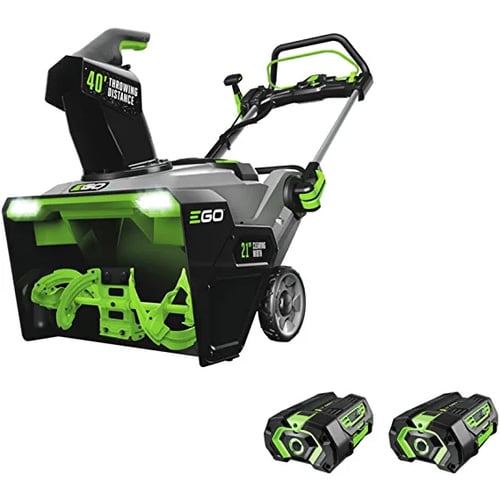
This image is property of lawnlove.com.
Battery Technology Advancements
Improved Battery Capacity
Battery technology advancements have led to improved battery capacity in recent years. Lithium-ion batteries, in particular, have higher energy density, allowing them to hold more power in a compact size. With a higher battery capacity, battery powered snow blowers can last longer between charges, providing extended run time and enhancing their overall effectiveness.
Better Power Output
Advancements in battery technology have also resulted in better power output for battery powered snow blowers. Higher-powered batteries can deliver more torque and rotational speed, allowing the snow blower to tackle heavier snow with greater ease. When choosing a battery powered snow blower, look for models with high power output to ensure optimal performance.
Faster Charging Options
Battery technology advancements have also brought about faster charging options for battery powered snow blowers. Rapid charging capabilities can significantly reduce the charging time, allowing you to get back to clearing snow quickly. Some manufacturers offer fast chargers or interchangeable battery systems, so you can have multiple batteries ready to use while one charges.
Factors to Consider When Choosing a Battery Powered Snow Blower
Battery Life and Run Time
When choosing a battery powered snow blower, battery life and run time are crucial factors to consider. The battery life determines how long the snow blower can operate on a single charge, while the run time specifies the amount of time it takes to clear a given area. Consider the size of your property and the average snowfall in your area to select a snow blower with an appropriate battery life and run time for your needs.
Clearing Width and Depth
The clearing width and depth of a snow blower determine how much snow it can clear in a single pass. If you have a larger area to clear or experience heavy snowfall, opt for a snow blower with a wider clearing width and deeper clearing depth. This will allow you to clear more snow efficiently and reduce the number of passes required.
Terrain and Snow Conditions
Consider the terrain and snow conditions in your area when choosing a battery powered snow blower. If you have uneven or rough terrain, look for models with enhanced maneuverability features such as adjustable clearing height and variable speed settings. Additionally, if your area often experiences wet or packed snow, choose a snow blower with sufficient power and consider models specifically designed for such conditions.
Snow Blower Features
Take into account the additional features offered by different battery powered snow blowers. Some models may have heated handles, headlights, or chute controls, which can enhance your overall snow clearing experience. Consider your specific preferences and priorities to choose a snow blower with the features that will make your snow removal tasks more convenient and comfortable.

This image is property of empire-s3-production.bobvila.com.
Choosing the Right Battery for Your Snow Blower
Lithium-ion Batteries
Lithium-ion batteries are the most common type of battery used in battery powered snow blowers. These batteries offer high energy density, longer lifespan, and lightweight design compared to other battery types. They provide consistent power output and perform well in cold weather conditions, allowing you to clear snow efficiently even in frigid temperatures.
Ampere-hour (Ah) Rating
The ampere-hour (Ah) rating of a battery indicates its capacity or how much energy it can hold. Higher Ah ratings generally result in longer run times between charges. When choosing a battery powered snow blower, consider the Ah rating to ensure the battery can meet your snow clearing needs without requiring frequent recharging.
Battery Voltage
Battery voltage determines the power output of the snow blower. Higher voltage batteries provide more power, allowing for improved performance in heavy snow conditions. However, keep in mind that higher voltage batteries are typically heavier and may affect the overall maneuverability of the snow blower. Consider the trade-off between power and weight to choose the right battery voltage for your needs.
Cordless or Interchangeable Battery System
Some battery powered snow blowers come with a cordless design, while others have an interchangeable battery system. Cordless snow blowers offer increased mobility and flexibility since you’re not limited by the length of a power cord. On the other hand, snow blowers with interchangeable battery systems allow you to have multiple batteries on hand, ensuring continuous operation without waiting for a battery to charge.
Tips for Optimizing Battery Performance
Proper Battery Charging
To optimize the performance and lifespan of your battery, it’s essential to follow the manufacturer’s recommendations for charging. Use the provided charger and ensure the battery is fully charged before use. Avoid overcharging or undercharging the battery, as both can negatively impact its performance and longevity.
Storing Batteries in Cold Weather
If you live in an area with cold winters, proper battery storage is crucial. Store your batteries in a cool, dry place when not in use to prevent damage from temperature fluctuations. Extreme cold temperatures can reduce battery performance, so it’s advisable to bring the batteries indoors when not in use.
Keeping Batteries Dry
Moisture and wet conditions can damage batteries. Avoid exposing your batteries to rain, snow, or any other sources of moisture. If you need to use your snow blower in wet conditions, take care to keep the battery compartment dry and clean to prevent water damage.
Regular Maintenance
While battery powered snow blowers require less maintenance than gas-powered models, it’s still important to perform regular maintenance tasks. This includes cleaning the snow blower after use, inspecting the battery for any signs of damage, and ensuring the connections are secure. Regular maintenance helps prolong the lifespan of your battery and ensures optimal performance.

This image is property of empire-s3-production.bobvila.com.
Comparing Battery Powered Snow Blowers to Gasoline-Powered Models
Environmental Impact
Battery powered snow blowers have a significantly lower environmental impact compared to gasoline-powered models. They produce zero emissions during operation, helping to reduce air pollution and climate change. Choosing a battery powered snow blower contributes to a more sustainable future by minimizing carbon footprint and protecting the environment.
Noise Pollution
Battery powered snow blowers operate quietly, effectively reducing noise pollution compared to gas-powered models. This makes them ideal for residential areas, where noise restrictions may apply, as well as for users who prefer a quieter snow clearing experience. Battery powered snow blowers allow you to maintain peace and tranquility while efficiently clearing snow from your property.
Ease of Use
Battery powered snow blowers are generally easier to use compared to gas-powered models. They are lighter, more maneuverable, and have simpler startup procedures. With no need for gasoline or oil, battery powered snow blowers eliminate the hassle of fueling and reduce the risk of spills or leaks. They also require less maintenance, further enhancing their ease of use.
Maintenance Requirements
Battery powered snow blowers have lower maintenance requirements compared to gas-powered models. Without an engine, there is no need for oil changes, spark plug replacements, or regular engine maintenance. While batteries do require care and maintenance, it is generally less demanding than maintaining a gas-powered snow blower. Battery powered snow blowers save time and money on maintenance tasks, allowing you to focus more on clearing snow.
Real-Life Performance and User Feedback
Snow Clearing Efficiency
In real-life performance, battery powered snow blowers have shown satisfactory snow clearing efficiency for light to moderate snow conditions. Users have reported being able to clear their driveways and walkways effectively, and some models even have adjustable clearing heights to handle different snow depths. However, it’s important to note that battery powered snow blowers may struggle with heavy, wet, or packed snow due to their limited power.
Battery Life in Different Conditions
The battery life of a snow blower can vary depending on various factors, including temperature, snow density, and the user’s clearing techniques. In colder temperatures, the battery may drain faster, reducing the overall run time. Wet or packed snow conditions may also require more power, affecting the battery life. It’s advisable to consider these factors and choose a snow blower with a battery capacity that meets your expected snow clearing demands.
Pros and Cons from Users
Users have shared their experiences and provided insights into the pros and cons of using battery powered snow blowers. The advantages, as highlighted, include lower noise pollution, eco-friendly operation, ease of use, and lower maintenance requirements. Users appreciate the convenience and portability of battery powered snow blowers, particularly for smaller areas and lighter snow conditions.
On the downside, some users have found that battery powered snow blowers may lack the power or endurance needed for heavy or deep snow conditions. Additionally, the higher upfront cost compared to gas-powered models can be a deterrent for some. However, with advances in battery technology, these limitations are being addressed, and newer models are continuously improving their snow clearing capabilities.

This image is property of cdn.thomasnet.com.
Manufacturers and Models to Consider
Brand A – Model X
Brand A’s Model X is a popular choice among homeowners looking for a reliable battery powered snow blower. It comes equipped with a high-capacity lithium-ion battery, providing sufficient power and extended run time for efficient snow clearing. The Model X offers a wide clearing width and depth, making it suitable for clearing both small and larger areas. Users have praised its ease of use, low noise operation, and minimal maintenance requirements.
Brand B – Model Y
Brand B’s Model Y is another noteworthy option in the battery powered snow blower market. It features a powerful battery with fast charging capabilities, allowing for quick recharge times. The Model Y is designed to handle various snow conditions, including wet and light, fluffy snow. Users appreciate its maneuverability, thanks to adjustable clearing height and variable speed settings. With its durable construction and solid performance, the Model Y has received positive feedback from users.
Brand C – Model Z
Brand C’s Model Z stands out for its exceptional power output and clearing capabilities. This battery powered snow blower is equipped with a high-voltage battery, delivering superior performance even in heavy snow conditions. The Model Z offers a wide clearing width and adjustable clearing depth, ensuring efficient snow removal in different situations. Users have praised its reliability, durability, and ability to tackle challenging snow conditions effectively.
Conclusion
Battery powered snow blowers present several benefits that make them a viable option for snow removal. They offer lower noise pollution, eco-friendly operation, ease of use, and low maintenance requirements. With advancements in battery technology, these snow blowers have improved battery capacity, better power output, and faster charging options. When choosing a battery powered snow blower, consider factors such as battery life, clearing width, terrain, and snow conditions. Lithium-ion batteries, ampere-hour ratings, battery voltage, and cordless or interchangeable systems are essential considerations. Optimizing battery performance involves proper charging, storing batteries in cold weather, keeping batteries dry, and regular maintenance. When compared to gasoline-powered models, battery powered snow blowers have a lower environmental impact, reduced noise pollution, greater ease of use, and fewer maintenance requirements. Real-life performance and user feedback indicate satisfactory snow clearing efficiency, with battery life affected by temperature and snow conditions. Several manufacturers and models, such as Brand A – Model X, Brand B – Model Y, and Brand C – Model Z, offer reliable battery powered snow blowers to consider. Ultimately, with the right battery powered snow blower, you can efficiently clear your property while enjoying the benefits of quiet operation, environmental friendliness, and ease of use.

This image is property of Amazon.com.
